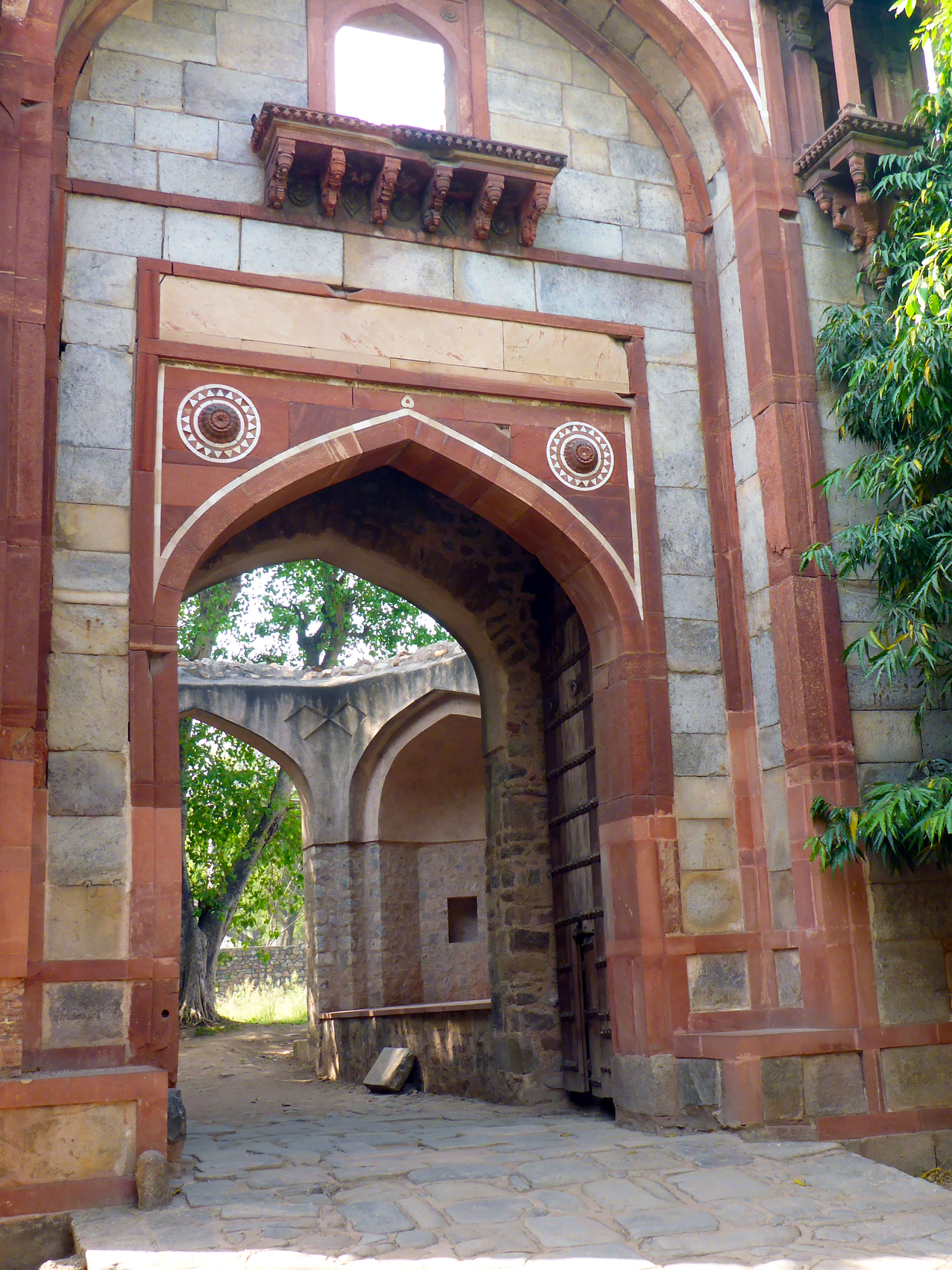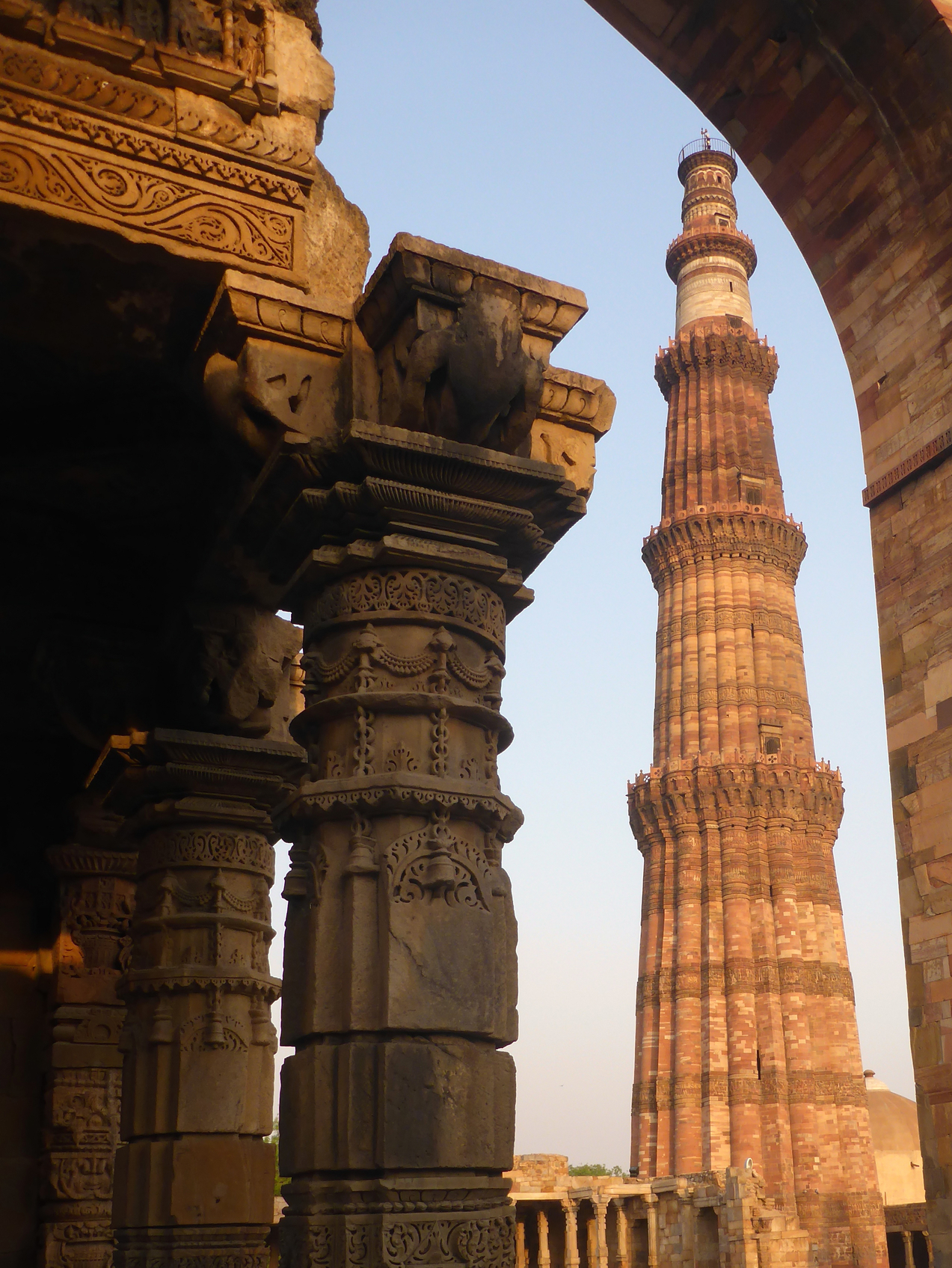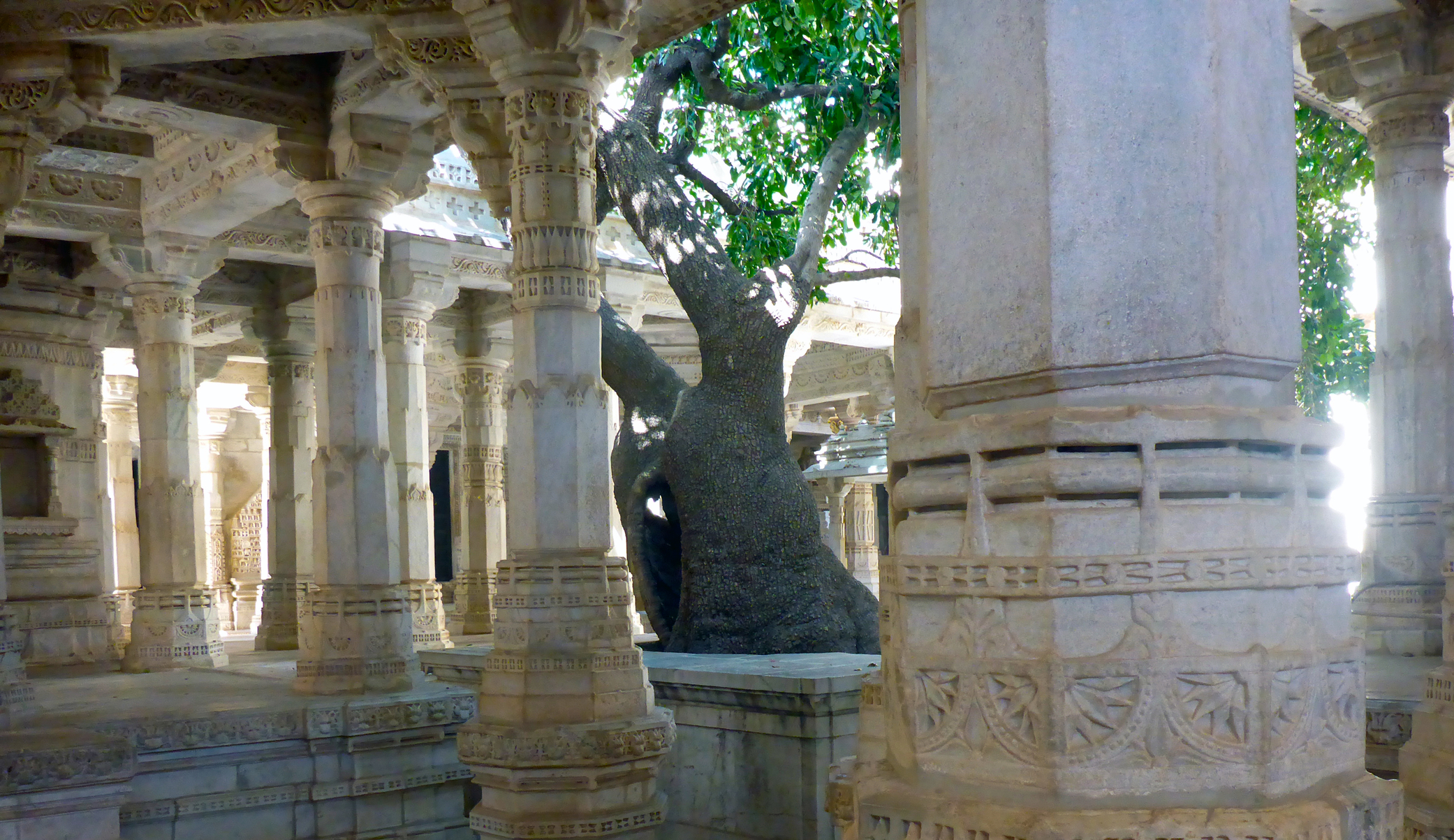As our Air India plane made its descent, I watched the outside air temperature read-out slowly rise. At around 12,000 feet, it came above zero degrees celsius, then started to climb – through the teens, twenties, into the thirties. The time was 9 pm. The temperature in Delhi was 37 degrees. We’d expected Indira Gandhi International Airport to be wall to wall people. It’s the largest aviation hub in India and South-East Asia, set to handle 100 million passengers annually by 2030. In fact, the airport was near deserted. We rode the empty travelators to their distant vanishing points, saluting occasional fellow passengers from AI301 like old friends. At the e-Tourist Visa counter our fingerprints were scanned. The immigration officer did his best imitation of a bureaucrat, but in the end his Indian sense of the ridiculous got the better of him, and we all had a good laugh. He stamped and signed the e-visas into our passports and waved us through. We were in India. We hadn’t gone 3 metres before another man wanted to see our visas. Six metres beyond that another was anxious to scrutinise them. Better keep our passports at the ready, we thought, in case all 1.25 billion subcontinent inhabitants are lining up outside to gape at our visa stamps. Grabbing the bags off the carousel, we moved off anxiously. Amid the probable crush of meet-and-greeters who’d be outside the doors, we must locate our man from TSI Holidays. What if he wasn’t there? What if we were alone in the hungry belly of India? And sure enough – he wasn’t. The crush of meet-and-greeters turned out to be four sleepy men leaning on a rail. The men bore signs, but none was for us. All is lost, we decided. What to do now? In despair, I asked the most wakeful of the sleepy men. ‘Not allowed,’ he answered. ‘Is waiting outside. Not allowed here. Outside . . .’ He flung an arm in the direction of yet another set of doors that we hadn’t noticed. There were two outsides? Hope reviving, we exited doors a second time and, to prove it wasn’t a dream, a wave of palpable heat struck us. This was India’s real outside. It felt real. It smelt real. And there stood a pleasant man in pressed white uniform, supporting a sign that read, ‘Adrian Bell x 02 Pax’. We rushed thankfully towards him. Like the meeting of a family in heaven. He hung welcome garlands of gold marigolds round our necks. His name was Vinod Kumar, and he was to be our driver for the next 12 days.
 Entrance to Humayun’s Tomb
Entrance to Humayun’s Tomb
 Delhi’s Old Crowded Market
Delhi’s Old Crowded Market
 Qutub Minar, world’s tallest minaret
Qutub Minar, world’s tallest minaret
In India, lines on a road surface that we fondly think of as marking lanes – discreet zones for vehicles to run in – mean something quite different. They mean you are on a road. A carriageway of 4 lanes in one direction, such as the road from IGI into Delhi, allows for 8 or 9 vehicles plus a cow and two pedestrians to travel abreast. Only one vehicle at a time is permitted to travel in the wrong direction. You may pass a vehicle, providing one wing mirror slips over the top of the other. We asked Vinod if the traffic was always this bad so late in the evening. ‘Rush hour, sir, ma’am,’ he told us. ‘Now?’ ‘They are going home, sir.’ As we inched forward, we wondered whether they’d been going home for 5 hours. First rule of driving in India: keep moving. Do NOT stop, no matter what. Give way to absolutely no one, unless he or she is a cow. Cows always have right of way. You are entitled to blow your horn at anyone anytime – including cows, who are entitled to take no notice. ‘Three things the driver is needing,’ Vinod informed us: ‘good brakes, good horn, good luck.’ In line with the old maxim, ‘When you’ve got nothing, you’ve got nothing to lose,’ right of way on Indian roads belongs to the guy with the least to lose. Nose first wins. The rule at roundabouts is the same as for swimming in early spring. Just dive in and get yourself wet. Vinod eventually pulled up at what looked like the entrance to a high-security military base. Since the Mumbai terror attacks of 2008, security at hotels in India has been stepped up. A guard looked under the car’s hood before letting us through. Then we were frisk searched, and our bags, including hand baggage, were scanned as we entered the Suryaa Hotel. It was the first of 3 stays at the Suryaa whilst we were in India. The hotel started to feel like home. Out the windows black kites wheeled in the sky, searching for prey. It’s true that multi-star tourist hotels aren’t authentic India. But walk before you run. We were so scared when we arrived, we used bottled water to brush our teeth. Everybody had warned: ‘You’ll get sick inside a week.’ ‘Dhal in, dhal out.’ ‘Getting on a bus, I had to squat right there and do it on the ground.’ ‘People drink from water that has dead bodies floating in it.’ ‘You’ll get raped.’ But for us, India didn’t realise any such fears. Quite the opposite. India’s devil-may-care worldview kept quietly poking fun at our Western fears and anxieties. To give an idea of different perspectives: consider the Jain Temple at Ranakpur, Rajasthan. In the Christian West, people visit churches and cathedrals to leave the world behind. Church windows stain corporeal light with colour to turn it heavenly. There is outside, and there is in. Churches make perfect symbols for soul-body dualism. Pure or sinful. Good or evil. Sick or well. Churches offer sanctuary against the perils of being in a body, and Western health care does much the same. But the Jain Temple at Ranakpur is open to the sky. Outside is in. Inside is out. A 600 year-old tree grows inside the temple. The hot Rajasthani wind blows freely around the temple’s countless interior marble pillars. Monkeys, mosquitoes, bacteria, poisonous snakes – all living things are welcome in the temple sanctuary. India is so poor, many people’s houses have no walls. Half-built or half-demolished? – so often you see a building, and wonder. But India’s poverty is an abyss spanned effortlessly by her generosity. Souls in India are old. The people’s gentle humour comes at a cost of huge suffering. Skinny piglets eat from open sewers, cows ride the buses, camels fill up at petrol pumps, and lane markings on roads are as meaningful as knots in carpet. It’s a truth the West long ago lost sight of.
 Jain Temple at Ranakpur
Jain Temple at Ranakpur
